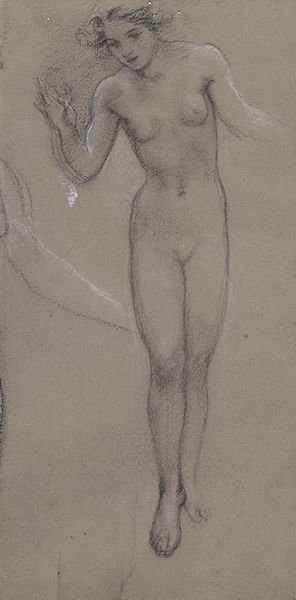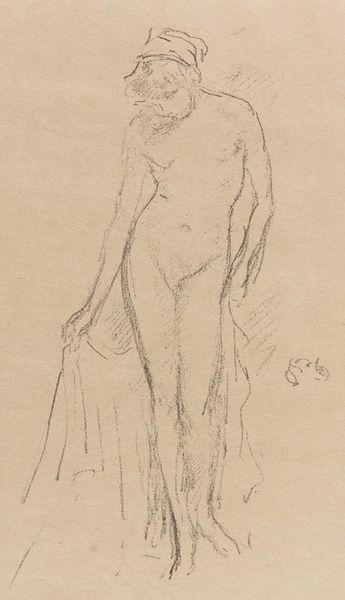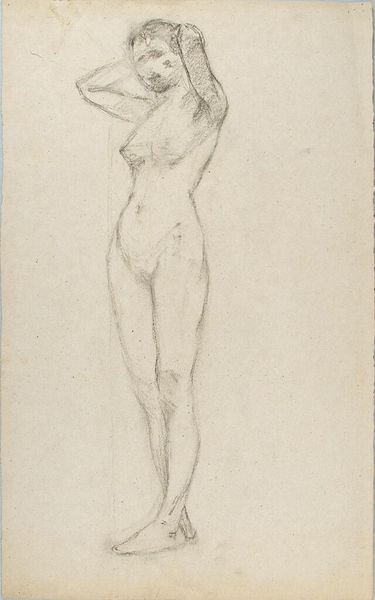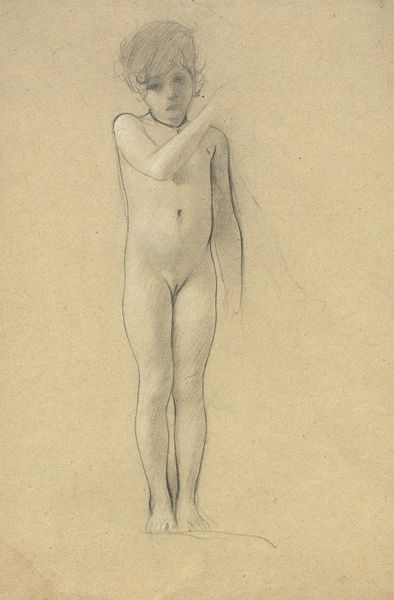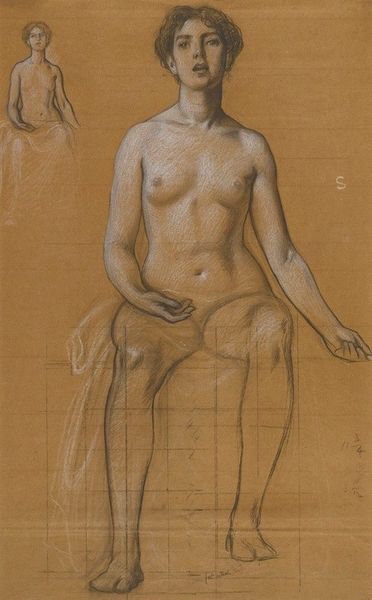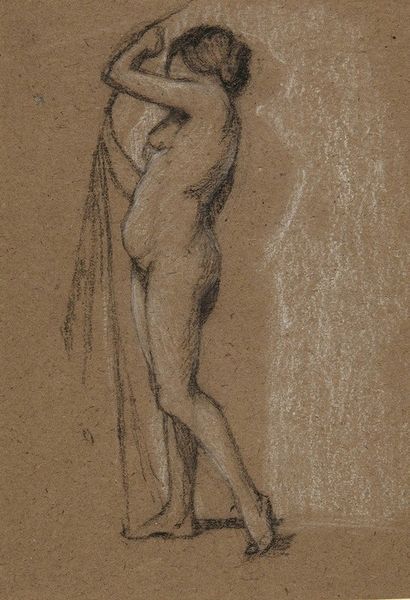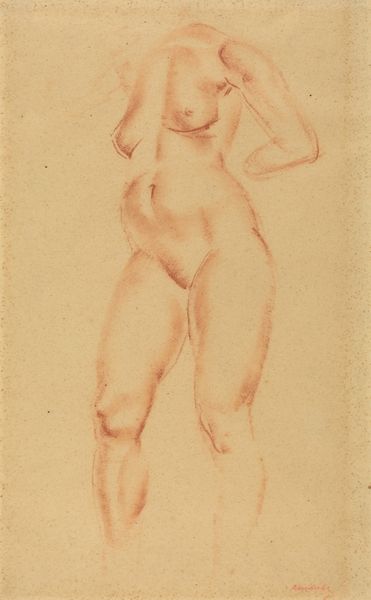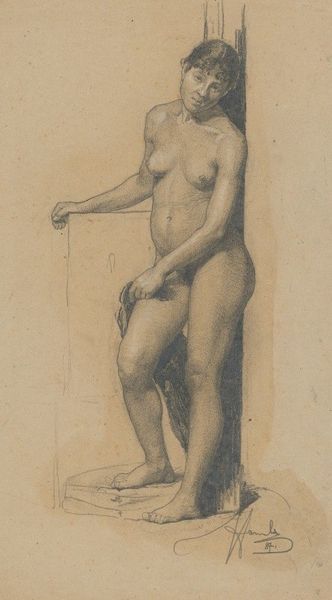
drawing, pencil, graphite
#
portrait
#
drawing
#
pencil
#
graphite
#
nude
Copyright: Public Domain: Artvee
James McNeill Whistler produced this evocative charcoal sketch, "Standing Nude," on brown paper. It's a study of the human form, but also speaks to the shifting status of the nude in late 19th-century art. Whistler was an American expatriate working in Europe, and his art often engaged with questions of national and cultural identity. In this drawing, we see the academic tradition of the nude challenged by Whistler’s subtle, suggestive style. Was Whistler critiquing academic conventions? Or celebrating the beauty of the human form? As art historians, we might look at the exhibition history of Whistler's nudes and compare it to similar works by his contemporaries to better understand the politics of the nude in his time. It would be interesting to consider how gender and class dynamics shaped the reception of such images. After all, the meaning of art is always contingent on its social and institutional context.
Comments
No comments
Be the first to comment and join the conversation on the ultimate creative platform.

